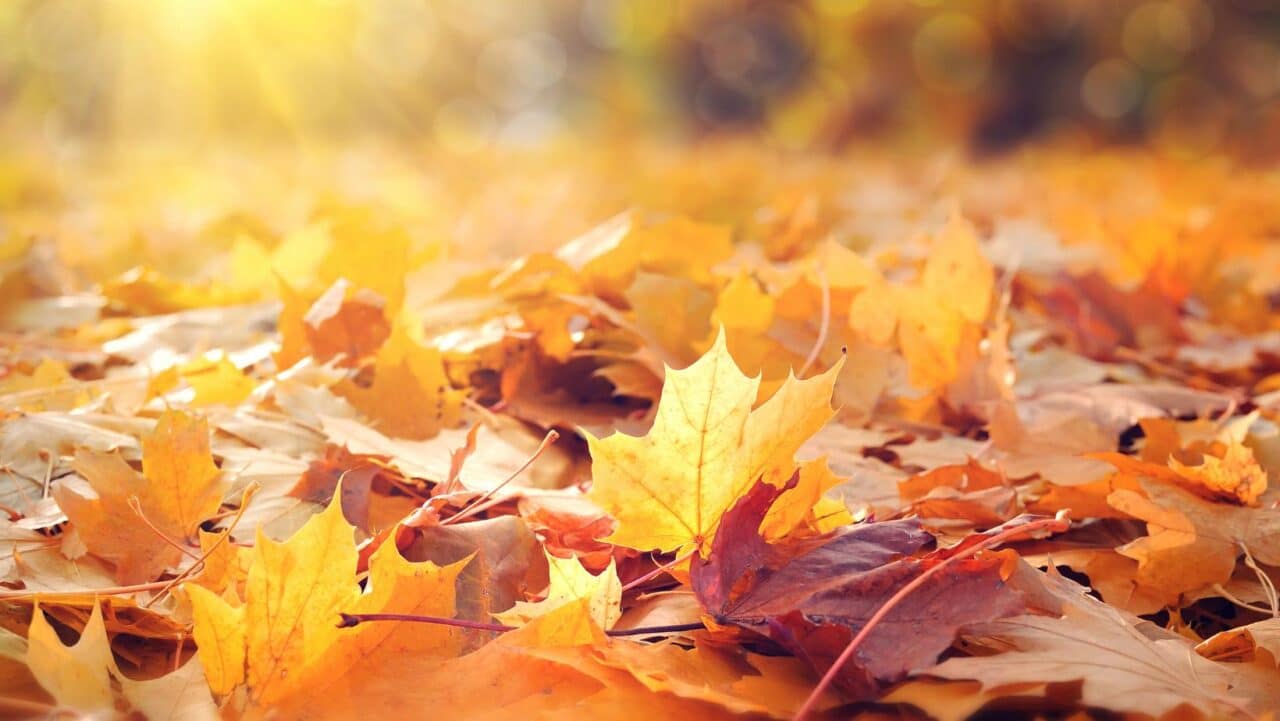Every fall, Northeast Ohio homeowners fill endless brown bags with leaves, drag them to the curb, and pay taxes for the city to haul them away — only for those same leaves to get composted and sold back to nurseries in spring.
Here’s the truth: you already own one of the best mulching systems around — your lawn mower.
Instead of wasting time and nutrients, mulch those leaves right into your yard once a week through fall. It feeds your soil, saves your back, and keeps waste out of landfills.
🌳 Why Leaf Cleanup Matters (and Why Disposal Is a Waste)
When leaves blanket your lawn in Cleveland’s damp autumn weather, they block sunlight and trap moisture, smothering your grass. Ignoring them all season can lead to mold, bare patches, and compacted soil come spring.
But bagging and shipping them off to the city? That’s throwing away free organic matter — nature’s fertilizer.
Disposal costs you twice:
-
You lose valuable nutrients your lawn could use.
-
You pay (indirectly) for the city to do the composting you could’ve done at home.
If you mulch and compost instead, you keep those nutrients in your own yard ecosystem — where they belong.
🌀 Mulching: The Smarter Way to Handle Leaves
How It Works
Mulching turns leaves into tiny, nutrient-rich particles that naturally break down into your lawn.
All you need is your mower and a plan:
-
Once a week through fall, blow or rake leaves from beds and driveways onto your lawn.
-
Mow slowly with a mulching mower or standard mower on a higher setting (about 3 inches).
-
Go over the area 2–3 passes until the leaves are shredded fine enough to fall between grass blades.
-
If the leaf layer is thick, make two passes a few days apart instead of trying to do it all at once.
By late November, you’ll have a lawn insulated with finely mulched leaves — and maybe a small pile of leftover chunks to toss into your compost bin.
Why It Works So Well in Cleveland
Cleveland lawns — often a mix of fescue, rye, and bluegrass — love organic matter.
Mulched leaves:
-
Add nitrogen and carbon back into the soil.
-
Improve drainage in clay-heavy yards.
-
Encourage earthworms and beneficial microbes to thrive even in cold months.
And because our region has a long freeze-thaw cycle, having that thin mulch layer actually protects roots from temperature swings better than bare soil.
🌱 Composting: The Next Step for Leftovers
If, after your final mow in late fall, there are still leaf piles or chunky debris, compost them.
How to Do It Right
-
Shred large leaves first — the smaller the pieces, the faster they break down.
-
Layer them with “greens” like grass clippings, coffee grounds, or veggie scraps.
-
Keep the pile damp (not soggy) and turn it every few weeks until it becomes rich, dark soil.
Come spring, that compost becomes garden gold — perfect for vegetable beds, flower gardens, and new sod installation.
🚫 Why You Shouldn’t Bag or Burn
1. Bagging
It’s time-consuming, wasteful, and strips your yard of nutrients. Bagged leaves sent to municipal facilities eventually become mulch or compost — which you’ll buy later at the store.
In other words, you’re paying for your own yard waste twice.
2. Burning
Still common in rural Ohio, but terrible for the environment — and your lungs. Burning releases carbon, smog-forming particulates, and smells awful. Plus, in most Cleveland suburbs, it’s illegal.
🧠 The Science Behind Leaf Mulching
University studies (including from Michigan State and Purdue) show that mulched leaves:
-
Reduce dandelions and crabgrass by suppressing weed germination.
-
Increase soil organic matter and water retention.
-
Improve microbial activity and long-term turf health.
Even better: a 10-year study found that lawns mulched with leaves each fall looked healthier and greener than those where leaves were removed.
So that weekly mow-and-mulch routine isn’t just easy — it’s backed by research.
🧹 Step-by-Step: Your Cleveland Fall Leaf Plan
Early Fall (Late September – Mid-October)
-
Start mulching weekly as soon as leaves begin to drop.
-
Keep mower blades sharp for finer shredding.
-
Clear large sticks or wet clumps before mowing.
Mid-Fall (Late October – Early November)
-
Blow leaves out of garden beds onto the lawn for easier mulching.
-
Alternate mowing directions to get even coverage.
-
If rain’s heavy, wait a day or two — wet leaves can clog mowers.
Late Fall (Mid- to Late November)
-
Final mow: mulch everything one last time.
-
Gather leftover piles or thicker clumps and add them to your compost.
-
Store the mower after cleaning the deck and sharpening blades — it’ll be ready for spring.
🪴 Compost Use Ideas for Spring
Come March or April, that compost made from your shredded leaves can:
-
Enrich vegetable beds before planting.
-
Be mixed 50/50 with soil for raised beds.
-
Serve as top-dressing for patchy lawn areas.
-
Feed shrubs, perennials, or new garden installs.
Think of it as recycling nutrients within your property instead of exporting them out of it.
⚖️ Composting vs. Mulching: What’s the Difference?
| Feature | Mulching | Composting |
|---|---|---|
| Where it happens | On the lawn | In a pile or bin |
| Goal | Feed grass & soil directly | Create rich soil amendment |
| Timeframe | Immediate | 3–6 months |
| Effort level | Low (mow weekly) | Moderate (turn & monitor) |
| End product | Natural fertilizer in place | Usable compost for gardens |
Best approach: Do both. Mulch most of your leaves right into the lawn, and compost the extra at the end of the season.
💡 Pro Tips for Success
-
Don’t overdo it: If you can’t see grass after mulching, mow again or collect the excess.
-
Avoid wet clumps: They block airflow and invite mold.
-
Sharpen your mower blades: Dull blades shred unevenly.
-
Mix species: Oak, maple, and ash leaves balance each other for compost.
-
Skip leaf blowers in tight beds: They compact mulch and disturb roots — rake lightly instead.
🌎 Why It Matters
Every fall, cities like Cleveland collect thousands of tons of bagged leaves, burning fuel to haul and process them — only for landscapers and homeowners to buy that same compost back in spring.
Keeping those nutrients in your own yard reduces waste, cuts emissions, and saves you money.
It’s better for your soil, your wallet, and the planet.
In short:
Stop exporting your fertility.
Mulch your leaves, feed your lawn, and keep nature’s cycle on your property — not the city’s truck.
❓ FAQ: Fall Leaf Care in Cleveland
Q: Won’t mulching too many leaves smother my grass?
Not if you mulch weekly. Smaller layers break down faster, letting air and water reach the roots.
Q: What if my lawn mower doesn’t have a mulching blade?
You can still mow over leaves twice. For best results, upgrade to a mulching blade kit — they’re inexpensive and fit most mowers.
Q: Can I mulch wet leaves?
It’s possible but harder on the mower. Let them dry a day after rain for cleaner cuts.
Q: Are some leaves bad for compost?
No, but thicker leaves like oak break down slower — shred them first.
Q: Should I still rake near flower beds or fences?
Yes, but blow those piles onto the lawn for mulching instead of bagging them up.
🏡 Conclusion
In a city known for its trees, Cleveland homeowners have a choice every fall: waste the gift nature drops on your lawn — or use it to build healthier soil.
Mulching leaves weekly keeps your yard clean, your grass thriving, and your compost pile productive.
By the time spring rolls around, you’ll have greener grass, richer soil, and no bags of wasted potential sitting at the curb.
So this year, skip the “yard waste” pile — put those leaves to work where they belong.

